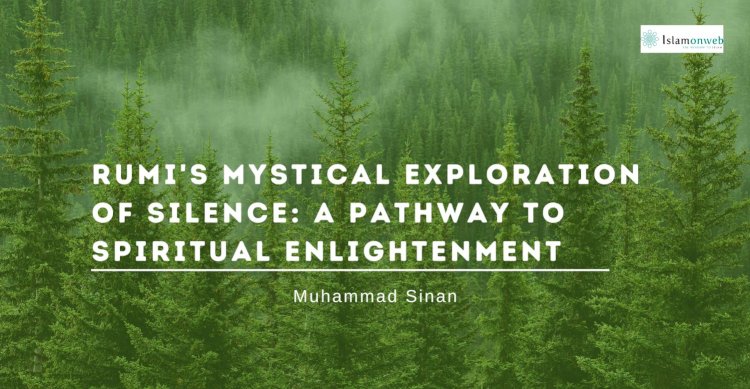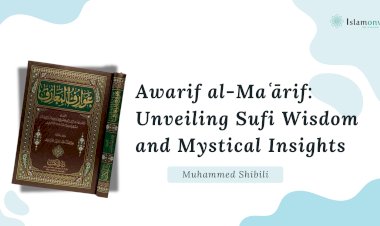Rumi's Mystical Exploration of Silence: A Pathway to Spiritual Enlightenment
Silence is not merely the absence of sound; it is a profound, deeply aesthetic state of being, revered across spiritual traditions as a gateway to heightened consciousness and communion with the Divine. Jalāl al-Dīn Rūmī, the quintessential 13th-century poet and Sufi mystic, championed this philosophy, weaving it into his timeless literary works that continue to captivate audiences worldwide. For Rūmī, silence is not a void but an ocean teeming with limitless possibilities, where the ego’s cacophony subsides, allowing divine truths to surface. His insights, rooted in the rich tradition of Sufism, position serenity and introspection as essential tools in the quest for enlightenment.
Rūmī’s perspective elevates silence as a bridge between the finite and the infinite, the worldly and the heavenly. Through his paradoxical verses, imbued with rich symbolism, he invites readers to embrace silence as an active state, enabling the heart to align with divine intelligence. In an age dominated by noise and endless distractions, Rūmī’s reflections on silence offer profound guidance for contemporary seekers of spiritual truth.
This study adopts an interdisciplinary approach to examine how one of history’s most celebrated mystics conceived the transformative potential of silence, demonstrating its enduring relevance in today's world.
Historical and Theological Context
Rūmī’s interpretation of silence is deeply embedded within the Islamic theological concepts of fanā (annihilation of the self) and baqā (subsistence in Divine Unity). For Rūmī, silence is not simply the absence of speech; it represents a state where the ego ceases its incessant chatter, allowing the divine presence to manifest. This perspective draws upon Quranic teachings on dhikr (remembrance of Allah) and Prophetic traditions concerning spiritual retreat (khalwa). Rūmī's distinctive contribution lies in portraying silence not merely as a technique for spiritual refinement but as an embodiment of union with the Divine. He harmonizes this with the Sufi doctrine of waḥdat al-wujūd (unity of existence), as articulated by his contemporary, Ibn ʿArabī.
The mystical dimensions of silence in Rūmī’s thought were significantly shaped by the spiritual heritage of the Mevlevi Order, which he founded. This Sufi order emphasised the interplay between samāʿ (spiritual music and dance) and moments of deep silence, creating a dynamic synthesis of exalted expression and introspection. The whirling tradition of the Mevlevis, interspersed with deep silence, exemplifies Rūmī’s view that silence is not mere emptiness but a receptive openness to the Divine. This paradoxical approach reflects the rich and diverse spiritual landscape of medieval Anatolia, a crossroads of faiths and cultures that greatly influenced Rūmī’s philosophy.
In the broader context of Islamic mysticism, Rūmī’s approach to silence represents a vital evolution in Sufi thought. While earlier Sufis had revered silence as a crucial spiritual practice, Rūmī elevated it to a central symbol of the soul’s quest for unity with the Divine. His poetry frequently likens silence to an ocean in which the constrained self dissolves, a metaphor that enriches the already Sufi symbolism of water. For a medieval Islamic audience, such imagery bridged the gap between external observance and internal experience, a core concern of mystical contemplation.
Rūmī’s treatment of silence also reflects the sophisticated intellectual environment of medieval Islam, shaped by its integration of Neo-Platonic ideas. In this framework, silence parallels the Neo-Platonic concepts of emanation and return, representing both the origin and ultimate destination of the spiritual journey. His interactions with contemporary scholars and mystics deepened this philosophical dimension, linking individual spiritual practices to expansive metaphysical principles.
Theoretical Foundations
Rūmī’s understanding of silence is rooted in the Sufi tradition's view of Allah as both transcendent and immanent. For Rūmī, silence is far more than the mere absence of sound; it is a metaphysical space where the boundaries between individual consciousness and divine existence dissolve. This concept is grounded in the Sufi ideas of fanā (the annihilation of the self) and baqā (subsistence in the Divine). In this framework, silence becomes the medium through which the ego's narrative dissolves, allowing the divine presence to manifest. From Rūmī's theoretical perspective, while language is essential for human communication, it ultimately creates a separation between the seeker and the ultimate truth. Thus, silence emerges as not only a spiritual practice but an ontological necessity for divine communion.
Rūmī integrates Neo-Platonic philosophy with Islamic mysticism to deepen his conceptualisation of silence. He presents silence as a bridge between the phenomenal world and the noumenal essence of existence, where reality’s ultimate truth resides. According to Rūmī, the spiritual journey to enlightenment involves gradually removing intellectual thoughts and verbal expressions, which he describes as "veils" that obscure the word of Allah. Through the practice of khalwa (spiritual retreat), seekers create an environment conducive to experiencing divine knowledge directly rather than merely comprehending it rationally.
In Rūmī's theoretical structure, silence transcends dualities, such as sound and stillness or self and other, becoming a state of being integral to mystical enlightenment. It is not only a means of self-perfection but also the ultimate destination—a space where the seeker aligns with divine essence. This insightful reconceptualisation of silence positions it as an imperative within the mystical framework, transforming it into a core element of the spiritual journey.
Silence as a Medium for Spiritual Transformation
In Rūmī’s mystical philosophy, silence transcends the mere absence of noise, becoming an important gateway to divine consciousness. By employing the hermeneutics of silence, Rūmī illustrates it as an ancient and deeply transformative virtue. In one of his poems, he equates silence to an abyss, an infinite space that, when filled, unites the seeker with Allah. This silence is not passive or stagnant; it is dynamic and alive—the very breath that purifies the soul, freeing it from worldly passions and the distractions of the mind. Rūmī often likens this deep quiet to the sea, suggesting that the soul must dive beneath its still surface to uncover the secrets of spiritual salvation.
Rūmī presents mystical silence as both a practice and a goal on the path to enlightenment. As a practice, it provides a means to transcend the limitations of words and intellectual reasoning, enabling a deeper level of spiritual insight. As a destination, it signifies the ultimate realisation of fanā (the annihilation of the self), where individual identity dissolves into oneness with divine reality. In this state of holy quietude, the distinctions between lover and beloved, seeker and sought, vanish into the unity of witness consciousness.
The transformation brought about by silence, according to Rūmī, is not confined to abstract ideas or theoretical musings. It is, above all, an experience—a direct, unmediated encounter with divine reality. Through silence, the soul moves beyond the superficial layers of existence to achieve sweeping spiritual awakening and union with the Divine.
Linguistic and Literary Analysis
To interpret silence in Rūmī's work merely as the absence of sound is to overlook the depth of his poetic expression. Through deliberate use of antithesis and metaphor, Rūmī portrays quietude not as inactivity but as a potent force, often described as "the language of God" and "the flash of heavenly insights." His lexical choices are particularly striking: when discussing silence, he employs verbs associated with life and movement—dance, flow, breath—creating a tension between stillness and dynamic change. This interplay suggests that silence is not a passive act but a vital process aimed at spiritual transformation.
The structure of Rūmī's compositions reinforces this dynamic. Many of his poems begin with elaborate, wordy proclamations before transitioning into simpler, quieter language—a reflection of his concept of "turning into stillness." Phrases such as "Close the language-door and open the love-window" exemplify his perspective on silence as both a semiotic and spiritual experience. In these lines, silence is not merely a cessation of speech but an active state of being that invites divine connection.
Rūmī’s skilful use of repetition and vivid imagery further emphasises silence as a bridge between human awareness and divine essence. By urging his audience to seek enlightenment "between the words" and in the spaces where the mind does not interfere, he underscores the transformative potential of stillness. In Rūmī’s hands, silence becomes both a literary device and a spiritual metaphor, guiding the reader toward a deeper understanding of their inner self and their relationship with the Divine.
Practical Implications of Rūmī's Teachings on Silence
Rūmī's insightful teachings on silence offer practical guidance for seekers of spirituality in their daily lives. He portrays silence as a purposeful and transformative process that opens up divine possibilities within the mundane. By trading the noise of the ego-mind for the "sound of nothing"—a state of non-thinking—Rūmī delves into the heart and soul of the human condition. This practice begins with cultivating the discipline to pause before responding to others, thereby avoiding reactive speech. It also involves integrating intentional periods of silence into one’s daily routine. These practical steps help practitioners become more self-aware, attuned to others, and capable of navigating life’s challenges with greater clarity and purpose.
Rūmī’s emphasis on silence also has significant implications for interpersonal and community relationships. He advocates for measured speech, asserting that embracing silence enables one to communicate more effectively when speaking is necessary. This practice yields several tangible benefits: it enhances the ability to support others by simply being present without feeling compelled to fix or respond; it increases awareness of when words are superfluous or counterproductive; and it fosters a deeper appreciation for the subtleties of non-verbal interaction.
In workplace settings and personal relationships, Rūmī's approach encourages thoughtful responses, aiding decision-making, conflict resolution, and the formation of meaningful connections. By pausing before reacting, individuals can transform conversations into opportunities for growth and understanding. This practice of silence becomes an active form of meditation, seamlessly integrating spirituality into the rhythms of everyday life. Even amidst the demands of a busy, modern world, practitioners can cultivate a state of prayerful awareness, embodying the spiritual depth that Rūmī’s teachings inspire.
Conclusion
Far from perceiving silence as a mere absence of sound, Rūmī envisions it as a transformative power capable of reshaping the human spirit. In his poetry and teachings, he illuminates the virtues of silence as the sacred space where divinity and human consciousness intersect. For Rūmī, silence is not passive; it is the fertile ground where spirituality grows and blossoms.
Rūmī’s conception of silence operates on multiple dimensions: as a practice akin to prayer and worship, as a physical, psychological, and hermeneutical stance, and as a mode of encountering the Divine. He argues that certain truths about existence transcend the limits of language and the constructs of self. By entering the realm of silence, individuals access a deeper understanding of reality that words cannot convey.
Silence, in Rūmī’s vision, becomes a mirror where the infinite reflects itself to the seeker, uniting the lover with the beloved and humanity with God. It is this mystical approach to silence—as both a method and a destination—that underscores its vital role in the spiritual journey, offering timeless lessons for seekers in every age.
Rumi’s portrayal of silence transcends conventional interpretations, especially as the Western world grapples with its audiophonic culture. His teachings remain relevant today, emphasising spiritual transformation through seemingly passive attitudes. Rumi suggests that getting lost is not inherently negative; instead, it serves as a precursor to spiritual awakening. This perspective challenges the notion that enlightenment arises from verbosity or superficial simplifications.
The present paper posits that Rumi’s mystical analysis of silence reveals it as both the path and the goal of the spiritual journey. In Rumi’s view, silence is not mere emptiness but the essence where the heart of nature, God, and the soul converge. It is within this ‘nowhere’—not a void, but a deep state of presence—that the ultimate truths of spiritual evolution are realised.
About the Author:
Muhammad Sinan is a second-year undergraduate student in the Department of Civilizational Studies at Shihab Thangal Islamic College, Vakery, Wayanad, Kerala, India. He hails from Mananthavady, Wayanad.
References :
1. Jalal al-Din Rumi. Coleman Barks, translator of *The Essential Rumi*. HarperOne, 2004.
2.Jalal al-Din Rumi. *Jalaluddin Rumi's Mathnawi*, translated by Reynold A. Nicholson. Trust for Gibb Memorial, 2002.
3.A. J. Arberry, translator of Rumi, Jalal al-Din. *Discourses of Rumi (Fihi Ma Fihi)*. Weiser, Samuel (1972).
4.The Sufi Path of Love: The Spiritual Teachings of Rumi* Chittick, William C. New York State University Press, 1984.
5.Annemarie Schimmel. *The Triumphal Sun: An Analysis of Jalaluddin Rumi's Writings*. New York State University Press, 1993.
6.Book One of Rumi's Mystical Design: Reading the Mathnawi by Safavi, Seyed Ghahreman, and Simon Weightman. New York State University Press, 2009.
7.Franklin D. Lewis. *Rumi: East and West, Past and Present*. Oneworld Publications, 2014.
8.Nasr and Seyyed Hossein. "Islamic Mysticism and Silence." Pages. 233–245 in *Islamic Studies*, vol. 6, no. 3, 1967
9."The Paradox of Silence in Rumi's Poetry," by Fatemeh Keshavarz. Pages. 45–61 in *Journal of Sufi Studies*, vol. 1, no. 1, 2012.
10.Ernst, Carl W. "Silence as a Path to Truth: Rumi and the Sufi Tradition." pp. 73–82 in *Studies in Comparative Religion*, vol. 9, no. 2, 1975.
11."Exploring Rumi’s Silence and Mysticism." Mevlana Museum. accessible online at the official Rumi studies website of the museum.
Disclaimer
The views expressed in this article are the author’s own and do not necessarily mirror Islamonweb’s editorial stance.
























Leave A Comment